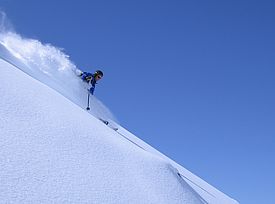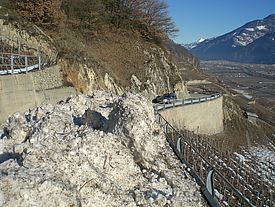01.11.2016 | News
An analysis of the data on avalanche victims in Switzerland shows a significant decline in the number of deaths in controlled areas over the last 80 years. In open terrain the number of victims has dropped from a high point in the eighties and remained fairly stable since then – even though more snow sport participants are now venturing off piste.
Backcountry snow sports are currently booming. Countless tourers and freeriders will be heading into outlying terrain again this winter. Is the number of avalanche victims steadily increasing as a consequence? In seeking to answer this question, the SLF recently analysed the data on fatal avalanche accidents, which have been collected in the institute's destructive avalanche database since 1936.
Significantly fewer victims in controlled areas
In the 80 years since 1936/37 nearly 2,000 people lost their lives in almost 1,000 avalanches in the Swiss Alps and the Jura region. In controlled areas – roads, railways, communities and secured ski runs – the number of victims has declined substantially in recent decades. The 15-year annual average number of victims dropped from 15 at the end of the 1940s to less than 1 in 2010. Most of the fatal avalanches were triggered naturally, and nearly half of the accidents that claimed lives on transportation routes and ski slopes were work-related. Huge investments in avalanche barriers as well as improved danger maps, effective closures and evacuations, and the artificial triggering of avalanches are likely to have been instrumental in bringing about the marked reduction in the number of avalanche victims in controlled areas.
Fewer avalanche victims despite heightened popularity of backcountry snow sports
An analysis of the number of people killed in avalanches in open terrain, away from communities, transportation routes and controlled ski runs and pistes, presents a rather different picture. Nearly all of the accidents in open terrain in the last 80 years have involved people engaging in recreational backcountry touring or other off-piste activities at the time of the accident, including on snowshoes or snowboards. In the large majority of cases, the victims triggered the avalanches themselves. The 15-year annual average number of victims stood at fewer than ten during some periods at the start of the 1950s, before rising sharply in the sixties and seventies, and reaching a dismal record of almost 27 in the 1980s. The marked upturn in the number of victims in open terrain occurred at a time when winter tourism was growing rapidly, ski resorts were mushrooming, and travel was becoming more affordable for the general population. Although the number of recreational sports enthusiasts venturing away from controlled areas continued to rise, the number of people losing their lives declined in the nineties (annual average of 20 victims). A stronger focus on prevention (e.g. avalanche courses for SAC and J+S tour leaders), better information about the avalanche situation, and the steady increase in the availability of avalanche emergency kit (transceiver, shovel, probe) is thought to have exerted a favourable influence on the figures.
Similar trends in other Alpine countries
Avalanche accident statistics for all the Alpine countries are available for the period since 1970. The annual average number of deaths in avalanches in the Alpine region stands at 100, but here as well, the figures fluctuate sharply from year to year. In many cases the individual countries' figures are similar: in Switzerland and its neighbouring countries the number of avalanche victims is often especially high (or low) in the same years. Other countries' long-term trends are likewise similar to those recorded in Switzerland. While falling significantly in controlled areas, the number of victims in open terrain has decreased and is now more or less constant after peaking in the eighties. A sharper focus on avalanche prevention and information therefore appears to be bearing fruit in the other Alpine countries as well.
Accident prevention
In recent decades most avalanche accidents have involved recreational sports enthusiasts outside controlled areas. Given that every avalanche accident can have serious consequences for those involved, the priority is to prevent accidents as far as possible. Recreational sports enthusiasts intending to venture off piste should therefore
- seek instruction to learn about appropriate off-piste conduct and acquire the knowledge required to recognise avalanche prone locations,
- obtain information about the current avalanche danger,
- always carry avalanche emergency equipment, consisting of at least a transceiver, shovel and probe.
Contact ¶
Links and documents ¶
- Long-term statistics (including graphics)
- Original study on changes in the number of avalanche victims, produced by the SLF with representatives of other Alpine countries
- Entwicklung des Lawinenrisikos bei Aktivitäten im freien Gelände. Winkler K., 2016. Sicherheit im Bergland, Jahrbuch 2016. Österreichisches Kuratorium für Alpine Sicherheit, Innsbruck, AT. pp 26-33.
- Avalanche knowledge and prevention
- White Risk - Web-based avalanche prevention platform
Copyright ¶
WSL and SLF provide the artwork for imaging of press articles relating to this media release for free. Transferring and saving the images in image databases and saving of images by third parties is not allowed.


